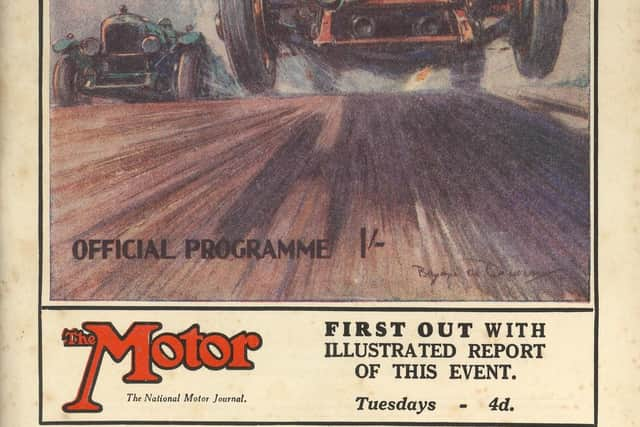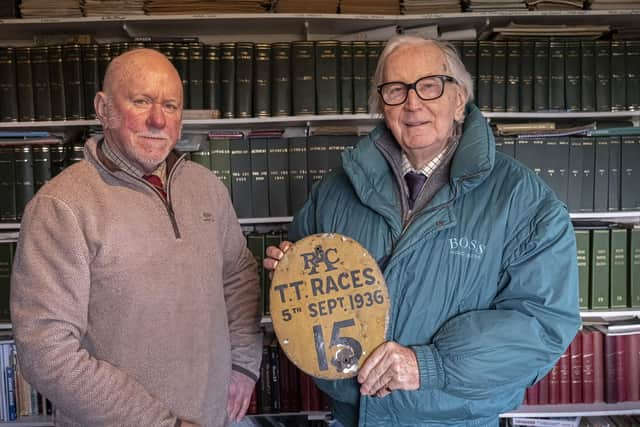Remembering the Ards TT: how tragedy brought a world famous road race to an end
and live on Freeview channel 276
From 1928 until 1936, the Ards TT brought racing legends from around the world with their thoroughbred machinery to duel on the roads around Comber and Newtownards. But the race for supremacy would end in tragedy with the death of eight spectators.
Up to half a million people would line the route to get a glimpse of racing royalty that included Sir Malcolm Campbell, Tazio Nuvolari or Kaye Don piloting the great racing marques such as Alfa Romeo, Mercedes and Bentley.
Advertisement
Hide AdAdvertisement
Hide AdLed by the great Ulster-Scots inventor, Harry Ferguson, along with his ally, William Wallace McLeod, a lecturer from the Belfast Institute of Technology, they persuaded Sir James Craig, PM of the then fledgling state of Northern Ireland, to help them convince the Royal Automobile Club to bring the Tourist Trophy to these shores.


But as speeds increased, dangers also increased and on a wet and cold day in 1936, a car driven by Belfast man Jack Chambers careered into a lampost at high speed and ploughed into spectators. Eight people died and around 40 were injured.
It started as one of the most glamorous races attracting royalty and racing icons but it is remembered as one of the most tragic days in motorsport history.
A BBC NI documentary ‘Race to Disaster – The Ards TT’, which was broadcast this week and is available on BBC IPlayer, revisits the once great race.
Advertisement
Hide AdAdvertisement
Hide AdPresented by Mark Thompson, the programme travels to the temple of British motor racing, the RAC in London, to learn how the TT was staged in Northern Ireland from 1928 until a fateful day in 1936.


With contributions from Formula 1 winner John Watson, historians Colin Johnston and the RAC’s Ben Cousins, the programme hears from the relatives of one of the young victims on that fateful day.
Journalist and Isle of Man native, Rick Farragher, also brings an insider’s knowledge to the story.
Presenter Mark Thompson said: “The story of the Ards Circuit Ulster TT is well-known to motor sport enthusiasts and ‘petrolheads’ but hardly known at all by the general public, including myself, even as a lifelong resident of the area where it took place in those remarkable years from 1928 to 1936.
Advertisement
Hide AdAdvertisement
Hide Ad“It’s hard to believe that a world famous race which took place on the rural roads between Dundonald, Newtownards and Comber has almost been forgotten – and it has been a pleasure and privilege to meet so many knowledgeable people and to learn of its worldwide success.


“The vision of Harry Ferguson and William Wallace McLeod delivered a truly world-class sporting occasion to the new Northern Ireland for nine consecutive years, attracting the biggest motoring brands and daredevil drivers from around the globe, and some reports from the time say up to 600,000 spectators flocked to the 13-mile course.
“Yet, it all came to a horrific end on a wet Saturday in September 1936 in Newtownards – a terrible crash in which eight people died and over 40 seriously injured – but which was, mercifully, close to the entrance to Ards Hospital.
“The programme not only acknowledges the international motoring success, but also commemorates the local community tragedy of those lost lives.”